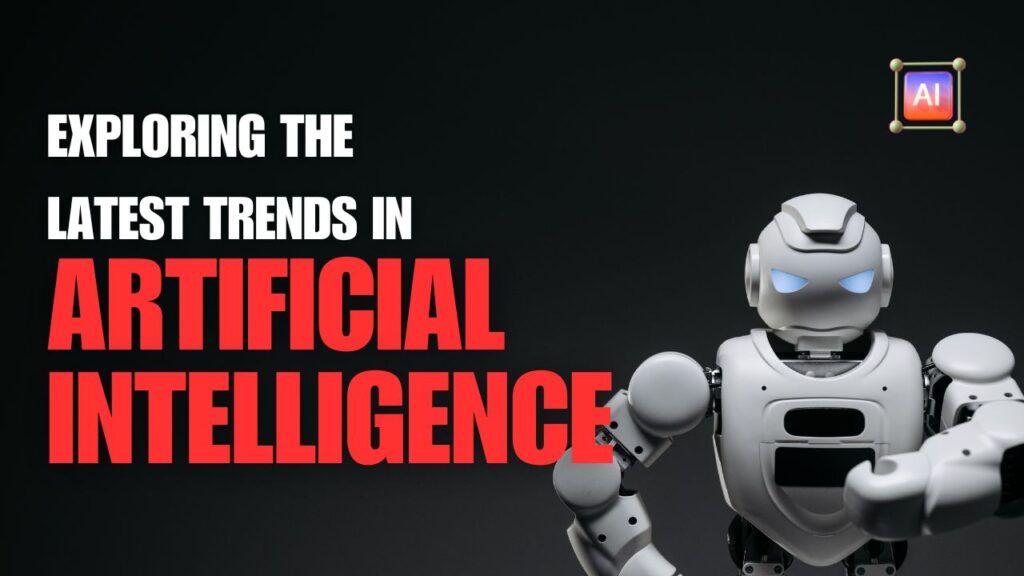Artificial Intelligence (AI) continues to evolve rapidly, transforming industries, businesses, and everyday life. From advancements in machine learning algorithms to breakthroughs in natural language processing, the field of AI is witnessing a surge of innovation. In this article, we’ll delve into some of the latest trends shaping the landscape of artificial intelligence.
Latest Trends in Artificial Intelligence
1) Federated Learning
Federated learning is gaining momentum as a privacy-preserving technique in AI. This approach allows models to be trained across decentralized devices without sharing raw data. It’s particularly useful in scenarios where data privacy is paramount, such as healthcare and finance. By leveraging local data on devices like smartphones or IoT devices, federated learning enables the development of robust AI models while respecting user privacy.
2) Explainable AI (XAI)
As AI systems are integrated into critical decision-making processes, there’s a growing demand for transparency and interpretability. Explainable AI (XAI) addresses this need by providing insights into how AI models arrive at their decisions. Techniques such as attention mechanisms and model-agnostic methods enable users to understand the rationale behind AI predictions. XAI not only enhances trust in AI systems but also facilitates compliance with regulatory requirements.
3) AI-driven Automation
Automation powered by AI is revolutionizing industries by streamlining processes, optimizing efficiency, and reducing costs. From robotic process automation (RPA) to intelligent chatbots, organizations are leveraging AI to automate repetitive tasks and enhance productivity. With advancements in natural language understanding and computer vision, AI-driven automation is poised to reshape workflows across various sectors, including manufacturing, customer service, and logistics.
4) Edge AI
Edge computing combined with AI, known as Edge AI, brings intelligence closer to the data source, reducing latency and bandwidth usage. By deploying AI algorithms directly on edge devices like sensors, drones, and cameras, real-time processing and decision-making become feasible. Edge AI finds applications in autonomous vehicles, smart cities, and industrial IoT, enabling localized insights and actionable intelligence without relying heavily on cloud infrastructure.
5) Generative AI
Generative AI encompasses techniques that enable machines to create new content, ranging from images and music to text and videos. Recent advancements in generative models, such as GANs (Generative Adversarial Networks) and transformers, have led to astonishing capabilities in content generation. These models can produce realistic images, compose music in various styles, and even generate human-like text. Generative AI is driving creativity across diverse domains, including art, entertainment, and design.
Conclusion
The latest trends in artificial intelligence reflect the ongoing pursuit of innovation and advancement in the field. From federated learning to explainable AI, these trends are reshaping industries, driving automation, and empowering decision-making processes. As AI continues to evolve, it’s essential to embrace these trends to harness the full potential of artificial intelligence in addressing complex challenges and creating transformative solutions.
FAQs
What is the significance of federated learning?
Federated learning allows AI models to be trained across decentralized devices while preserving data privacy, making it ideal for sensitive domains like healthcare and finance.
How does explainable AI enhance trust in AI systems?
Explainable AI provides insights into AI decision-making processes, enabling users to understand and trust the rationale behind AI predictions, thus enhancing transparency and accountability.
What are some examples of AI-driven automation?
Examples of AI-driven automation include robotic process automation (RPA), intelligent chatbots for customer service, and automated quality control in manufacturing.
How does Edge AI differ from traditional AI?
Edge AI involves deploying AI algorithms directly on edge devices, enabling real-time processing and decision-making without relying heavily on cloud infrastructure, thus reducing latency and bandwidth usage.
What are some applications of generative AI?
Generative AI finds applications in various domains, including generating realistic images, composing music, and creating human-like text, driving creativity and innovation in art, entertainment, and design.





